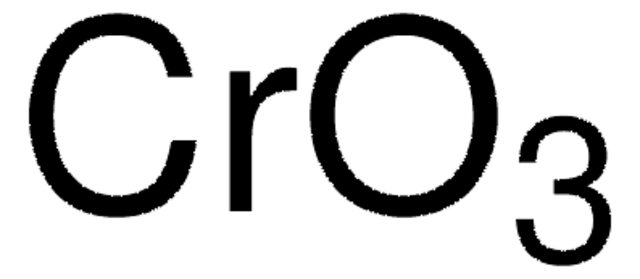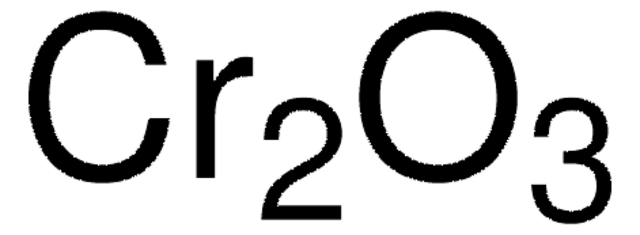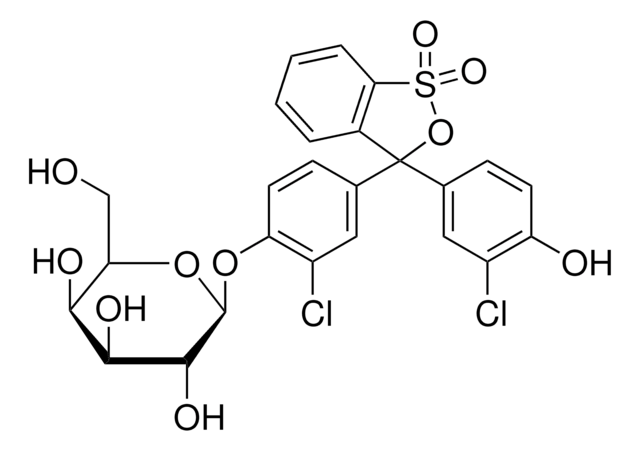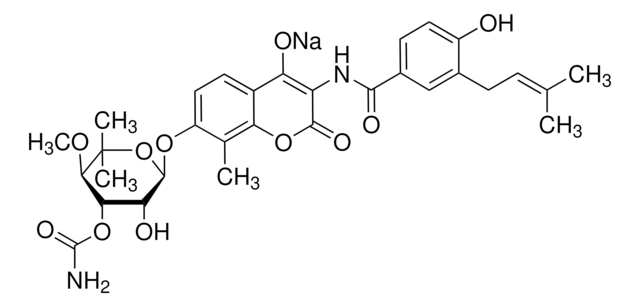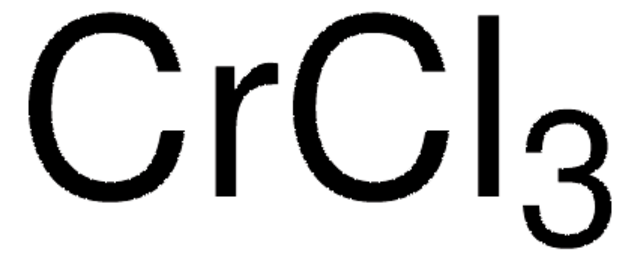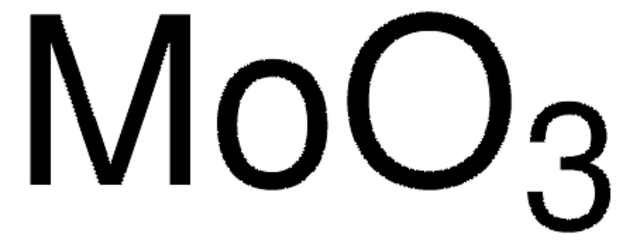232653
Chromium(VI) oxide
ReagentPlus®, 99.9% trace metals basis
Sinonimo/i:
Chromic anhydride
About This Item
Prodotti consigliati
Grado
reagent
Nome Commerciale
ReagentPlus®
Saggio
99.9% trace metals basis
Stato
(powder and or flakes)
pH
<1 (20 °C, 100 g/L)
Punto di fusione
196 °C (dec.) (lit.)
Stringa SMILE
O=[Cr](=O)=O
InChI
1S/Cr.3O
WGLPBDUCMAPZCE-UHFFFAOYSA-N
Cerchi prodotti simili? Visita Guida al confronto tra prodotti
Categorie correlate
Descrizione generale
Applicazioni
- Transformation of various primary alcohols to carboxylic acids.
- Oxidation of arenes (naphthalenes and anthrathene) to the corresponding quinones by using periodic acid as the terminal oxidant in acetonitrile.
- Benzylic oxidation of various substituted toluene to the corresponding benzoic acids.
- Oxidation of sulfides to sulfones.
Note legali
Avvertenze
Danger
Indicazioni di pericolo
Classi di pericolo
Acute Tox. 2 Inhalation - Acute Tox. 3 Dermal - Acute Tox. 3 Oral - Aquatic Acute 1 - Aquatic Chronic 1 - Carc. 1A - Eye Dam. 1 - Muta. 1B - Ox. Sol. 1 - Repr. 2 - Resp. Sens. 1 - Skin Corr. 1A - Skin Sens. 1 - STOT RE 1 Inhalation - STOT SE 3
Organi bersaglio
Respiratory system
Codice della classe di stoccaggio
5.1A - Strongly oxidizing hazardous materials
Classe di pericolosità dell'acqua (WGK)
WGK 3
Punto d’infiammabilità (°F)
Not applicable
Punto d’infiammabilità (°C)
Not applicable
Scegli una delle versioni più recenti:
Possiedi già questo prodotto?
I documenti relativi ai prodotti acquistati recentemente sono disponibili nell’Archivio dei documenti.
I clienti hanno visto anche
Il team dei nostri ricercatori vanta grande esperienza in tutte le aree della ricerca quali Life Science, scienza dei materiali, sintesi chimica, cromatografia, discipline analitiche, ecc..
Contatta l'Assistenza Tecnica.